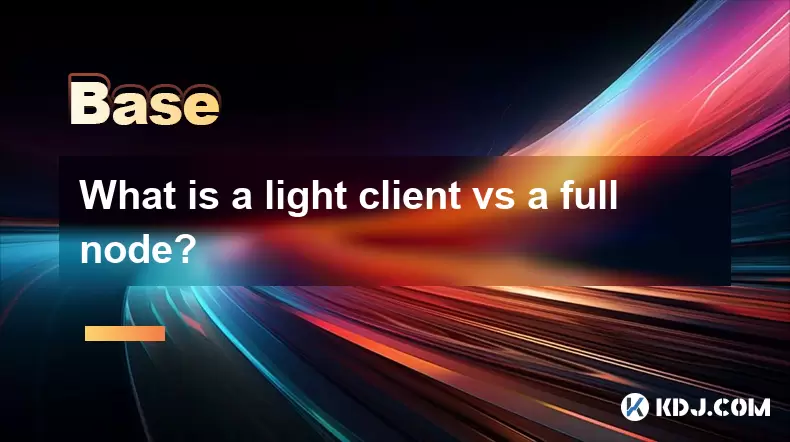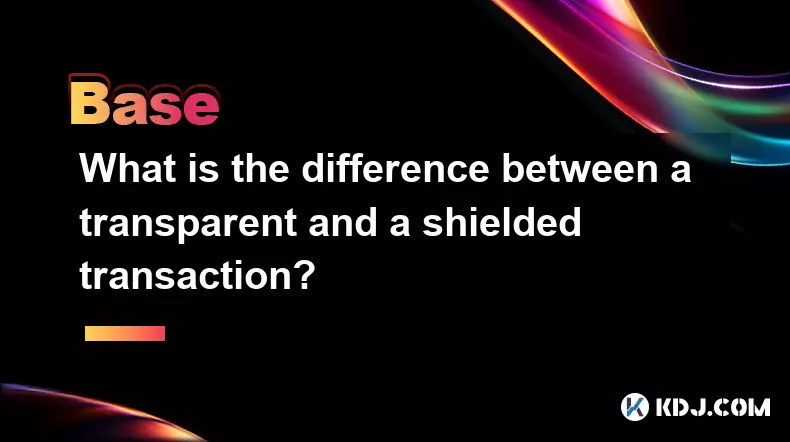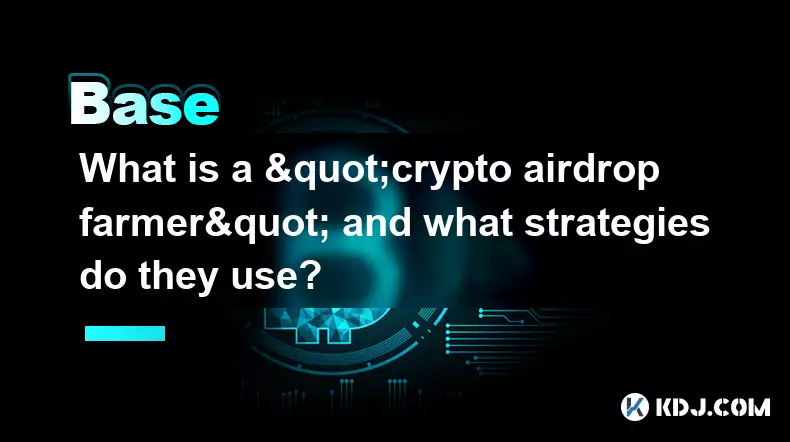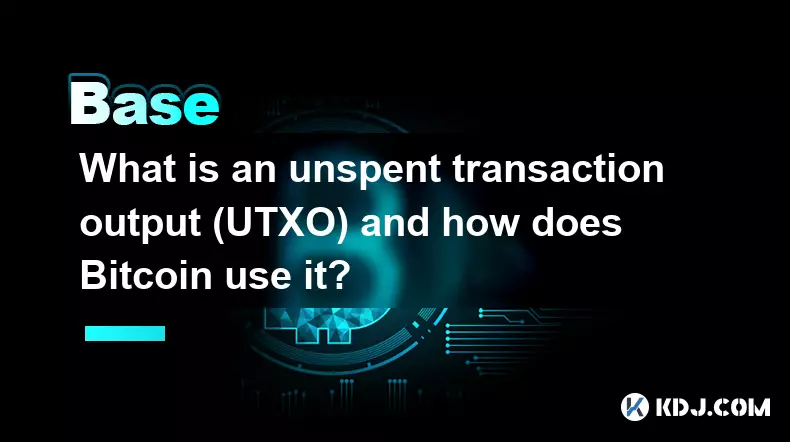-
 bitcoin
bitcoin $95203.028270 USD
-4.12% -
 ethereum
ethereum $3151.730711 USD
-1.61% -
 tether
tether $0.999170 USD
-0.04% -
 xrp
xrp $2.273039 USD
-1.55% -
 bnb
bnb $924.288432 USD
0.14% -
 solana
solana $141.112899 USD
-2.02% -
 usd-coin
usd-coin $0.999964 USD
0.02% -
 tron
tron $0.293976 USD
0.82% -
 dogecoin
dogecoin $0.160772 USD
-1.84% -
 cardano
cardano $0.506357 USD
-3.90% -
 hyperliquid
hyperliquid $37.900515 USD
0.03% -
 zcash
zcash $644.358451 USD
26.66% -
 chainlink
chainlink $14.062007 USD
-2.60% -
 bitcoin-cash
bitcoin-cash $484.381072 USD
-5.12% -
 unus-sed-leo
unus-sed-leo $9.199874 USD
0.27%
What is a light client vs a full node?
A full node validates all transactions independently, ensuring security and decentralization, while light clients rely on full nodes for faster, resource-efficient access to the blockchain.
Jul 09, 2025 at 11:57 am

Understanding the Concept of a Full Node
A full node is a program that fully validates transactions and blocks on a blockchain. It downloads a complete copy of the blockchain ledger and independently verifies every transaction without relying on any third party. This ensures that all rules of the cryptocurrency protocol are followed.
Running a full node requires significant storage space, bandwidth, and processing power, especially for large blockchains like Bitcoin or Ethereum. The node stores the entire transaction history, enforces consensus rules, and relays valid transactions to other nodes in the network.
By maintaining a full copy of the blockchain, a full node contributes to decentralization and security. It prevents fraudulent activity by cross-checking every transaction against its own validated history. Any attempt to spend coins that don’t exist or violate protocol rules will be rejected by the full node.
What Defines a Light Client?
A light client, also known as a lightweight wallet or simplified payment verification (SPV) client, does not download the entire blockchain. Instead, it only downloads block headers and relies on full nodes to provide relevant transaction data when needed.
This method drastically reduces the amount of data stored and processed, making light clients ideal for devices with limited resources such as smartphones or laptops. The light client assumes that the majority of full nodes are honest and follows the longest valid chain they support.
Light clients are faster to set up and easier to maintain compared to full nodes. However, they offer less security since they do not independently verify all transactions. Users must trust that the full nodes providing them with data are not colluding to present false information.
How Do Full Nodes and Light Clients Handle Transaction Verification?
In the case of a full node, every transaction is verified from the genesis block onward. This includes checking digital signatures, ensuring no double-spending has occurred, and confirming adherence to consensus rules like block size limits and difficulty adjustments.
For a light client, transaction verification works differently. It uses Merkle proofs provided by full nodes to confirm whether a particular transaction exists in a given block. The light client doesn't process the entire block but instead checks if the transaction is included in the Merkle tree root found in the block header.
This approach allows light clients to function efficiently but introduces a level of trust in the full nodes they query. If a light client connects to malicious nodes, it may receive incorrect information, which could lead to potential vulnerabilities.
Resource Requirements and Network Participation
Operating a full node demands substantial hardware and bandwidth. For example, running a Bitcoin full node currently requires hundreds of gigabytes of storage, consistent internet connectivity, and sufficient RAM to handle validation processes. These requirements can be prohibitive for casual users.
Conversely, a light client consumes minimal disk space—often just a few megabytes—and requires very little bandwidth. It communicates with multiple full nodes to fetch necessary data, allowing users to interact with the blockchain quickly without maintaining a full ledger.
Despite their differences, both full nodes and light clients play essential roles in the network. Full nodes enforce the rules and secure the system, while light clients increase accessibility and user adoption by lowering entry barriers.
Security Implications of Using Each Type
The security offered by a full node is significantly higher than that of a light client. Since full nodes validate everything themselves, they are immune to many types of attacks that target lightweight clients. They cannot be tricked into accepting invalid transactions unless the attacker controls more than 51% of the network's hashing power.
On the other hand, light clients face several risks due to their reliance on external sources. If all connected full nodes are compromised or dishonest, a light client might accept fraudulent data. Although this scenario is unlikely in well-established networks, it remains a concern for newer or smaller blockchains.
To mitigate these risks, light clients often connect to multiple full nodes simultaneously and compare responses. This redundancy helps ensure accuracy, though it still falls short of the independent verification performed by a full node.
Use Cases and Practical Applications
Businesses and developers requiring high levels of security and autonomy typically run full nodes. Exchanges, for instance, use full nodes to validate deposits and withdrawals without depending on third-party services. Developers also rely on full nodes to test smart contracts and applications in a trusted environment.
Individual users who prioritize convenience and mobility usually prefer light clients. Mobile wallets, for example, are commonly built as light clients to ensure fast synchronization and low resource consumption. These wallets allow users to send and receive funds easily without managing the complexities of a full node.
Organizations focused on decentralization and censorship resistance often encourage the operation of full nodes. In contrast, projects aiming for mass adoption may favor light clients to reduce technical barriers for new users.
Frequently Asked Questions
Q: Can a light client become a full node?Yes, a light client can transition into a full node by downloading the entire blockchain and beginning independent transaction validation. This process usually involves changing settings within the wallet software or switching to a different wallet that supports full node functionality.
Q: Are light clients slower than full nodes?Not necessarily. Light clients often sync faster initially because they download less data. However, they may experience delays when querying specific transaction details from full nodes, especially during peak network usage.
Q: Is it possible to run both a full node and a light client simultaneously?Yes, users can operate both on the same device or across different devices. Running a full node locally while using a light client remotely allows for greater flexibility and security depending on the use case.
Q: Do light clients contribute to network decentralization?While light clients do not validate transactions themselves, they still help propagate information through the network. Their presence increases overall participation, indirectly supporting decentralization by expanding the user base.
Disclaimer:info@kdj.com
The information provided is not trading advice. kdj.com does not assume any responsibility for any investments made based on the information provided in this article. Cryptocurrencies are highly volatile and it is highly recommended that you invest with caution after thorough research!
If you believe that the content used on this website infringes your copyright, please contact us immediately (info@kdj.com) and we will delete it promptly.
- Tokenization, 24/7 Markets, and Vlad Tenev: The Future of Finance?
- 2025-11-15 11:30:01
- Bull Market Bonanza: Crypto Presales and Explosive Growth Opportunities
- 2025-11-15 11:25:01
- Crypto Carnage: Navigating Selling and Liquidations in a Wild Market
- 2025-11-14 16:50:01
- Crypto Presales, Monero, and Solana: Navigating the Hype in the Wild West of Digital Assets
- 2025-11-15 11:20:01
- XRP ETF, Bitcoin ETF, Solana ETF: A New Era for Crypto Investing?
- 2025-11-15 11:15:02
- Bitfarms Plunges into AI: A Risky Bet or Genius Pivot?
- 2025-11-15 11:10:02
Related knowledge

What is the difference between a transparent and a shielded transaction?
Nov 10,2025 at 05:59pm
Understanding Transparent Transactions in Cryptocurrency1. Transparent transactions are the standard form of transaction on most public blockchains li...

What is a "crypto airdrop farmer" and what strategies do they use?
Nov 09,2025 at 03:39pm
What Is a Crypto Airdrop Farmer?1. A crypto airdrop farmer is an individual who actively participates in blockchain projects to qualify for free token...

What is an unspent transaction output (UTXO) and how does Bitcoin use it?
Nov 12,2025 at 01:40am
Understanding the Concept of Unspent Transaction Output (UTXO)1. An Unspent Transaction Output, commonly referred to as UTXO, is a fundamental compone...

What is a "governance attack" and how can a DAO be compromised?
Nov 14,2025 at 05:59am
Understanding Governance Attacks in Decentralized Autonomous Organizations1. A governance attack occurs when an individual or group gains disproportio...

How do you track a crypto portfolio across multiple wallets and chains?
Nov 12,2025 at 04:19pm
The Evolution of Decentralized Exchanges in the Crypto Ecosystem1. Decentralized exchanges (DEXs) have transformed how users trade digital assets by r...

What is a "rug pull" clause in a smart contract and how can you spot it?
Nov 14,2025 at 11:40pm
Understanding the Concept of a Rug Pull in Decentralized Finance1. A rug pull refers to a malicious act in the cryptocurrency space where developers a...

What is the difference between a transparent and a shielded transaction?
Nov 10,2025 at 05:59pm
Understanding Transparent Transactions in Cryptocurrency1. Transparent transactions are the standard form of transaction on most public blockchains li...

What is a "crypto airdrop farmer" and what strategies do they use?
Nov 09,2025 at 03:39pm
What Is a Crypto Airdrop Farmer?1. A crypto airdrop farmer is an individual who actively participates in blockchain projects to qualify for free token...

What is an unspent transaction output (UTXO) and how does Bitcoin use it?
Nov 12,2025 at 01:40am
Understanding the Concept of Unspent Transaction Output (UTXO)1. An Unspent Transaction Output, commonly referred to as UTXO, is a fundamental compone...

What is a "governance attack" and how can a DAO be compromised?
Nov 14,2025 at 05:59am
Understanding Governance Attacks in Decentralized Autonomous Organizations1. A governance attack occurs when an individual or group gains disproportio...

How do you track a crypto portfolio across multiple wallets and chains?
Nov 12,2025 at 04:19pm
The Evolution of Decentralized Exchanges in the Crypto Ecosystem1. Decentralized exchanges (DEXs) have transformed how users trade digital assets by r...

What is a "rug pull" clause in a smart contract and how can you spot it?
Nov 14,2025 at 11:40pm
Understanding the Concept of a Rug Pull in Decentralized Finance1. A rug pull refers to a malicious act in the cryptocurrency space where developers a...
See all articles









































































